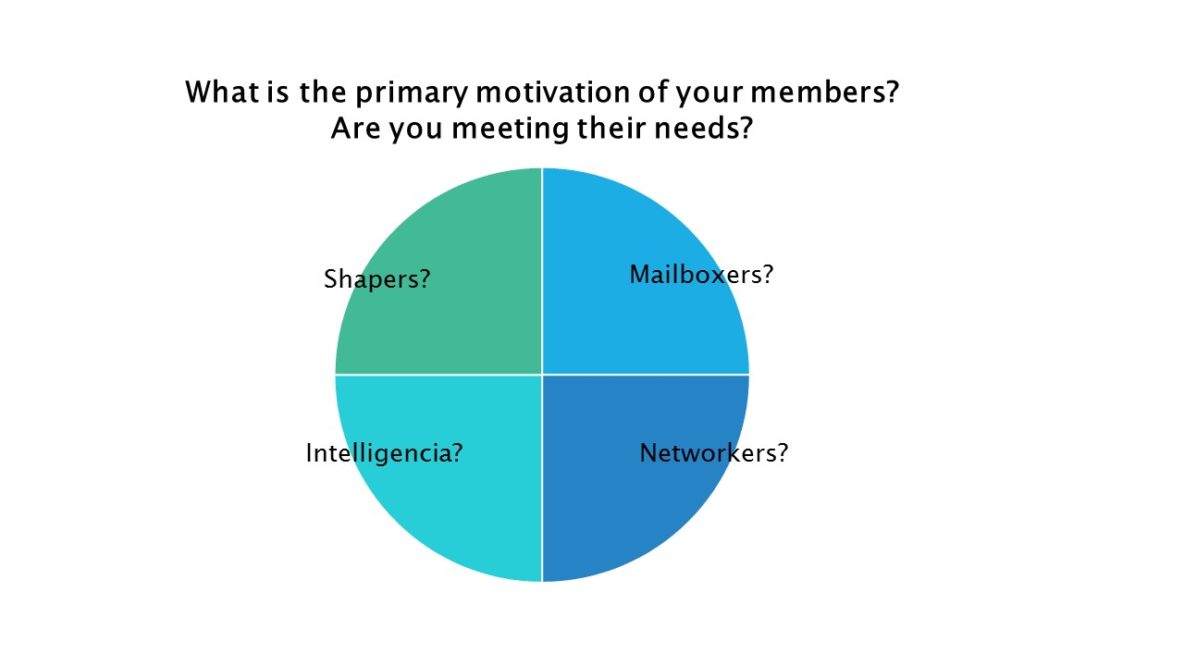Last week, Glenn published a blog about the competitive advantage of associations. In it he outlined the four psycho-demographics of association members identified by ASAE:
“Mail-boxers” who just want access to information. Just staying generally informed about what’s going on is the benefit they seek.
“Shapers” who want to influence the conditions of the field and the association. Participating in strategy and policy decisions that impact their relevant world are the benefits they seek.
“Intelligencia” who want to be on the leading edge and contribute to it. Advanced learning, intellectual stimulation, and thoughtful leadership are the benefits they seek.
“Networkers” who seek to spend time with others sharing their interests. Conversation, community, business deals and new friends are the benefits they seek.
This led to a question from a colleague:
Question:
How do you see this working in trade associations, in a B2B environment? Do you believe these truths to be universal to individual/professional and trade associations?
Answer:
The short answer is yes. I’ve never seen a building sitting around a trade association board table and I’ve never seen a corporate charter serving on a committee. The “shaper” profile could be applied to individuals engaged in a trade association who want the interests of their company pursued. As “shapers” their behavior could categorize them as:
- Destructive – the specific interests of their company at the expense of others or
- Constructive – the interests of their company as part of the larger community of common interests.
We also observe that the nature of the members’ industry or role in an industry often affects the relative proportion of membership in each psycho-demographic segment. For example: you might expect to find more “networkers” in an association with smaller companies and more “shapers” in an association with larger companies; more “Intelligencia” in the software industry and more “mail-boxers” in the transportation industry.
Two basic principles come to mind:
- Participants are people even if members are not; and
- Most people exhibit some of each preference, but each person has a primary personal preference.
Finally, we want to re-emphasize the difference between a stereotype and a segment. If I say “you will behave this way because you have this demographic characteristic”- that’s a stereotype. If I say “because you behave this way you are part of this group”- that’s a segment. Unfortunately, we are aware of some researchers who do not seem to understand the difference.


